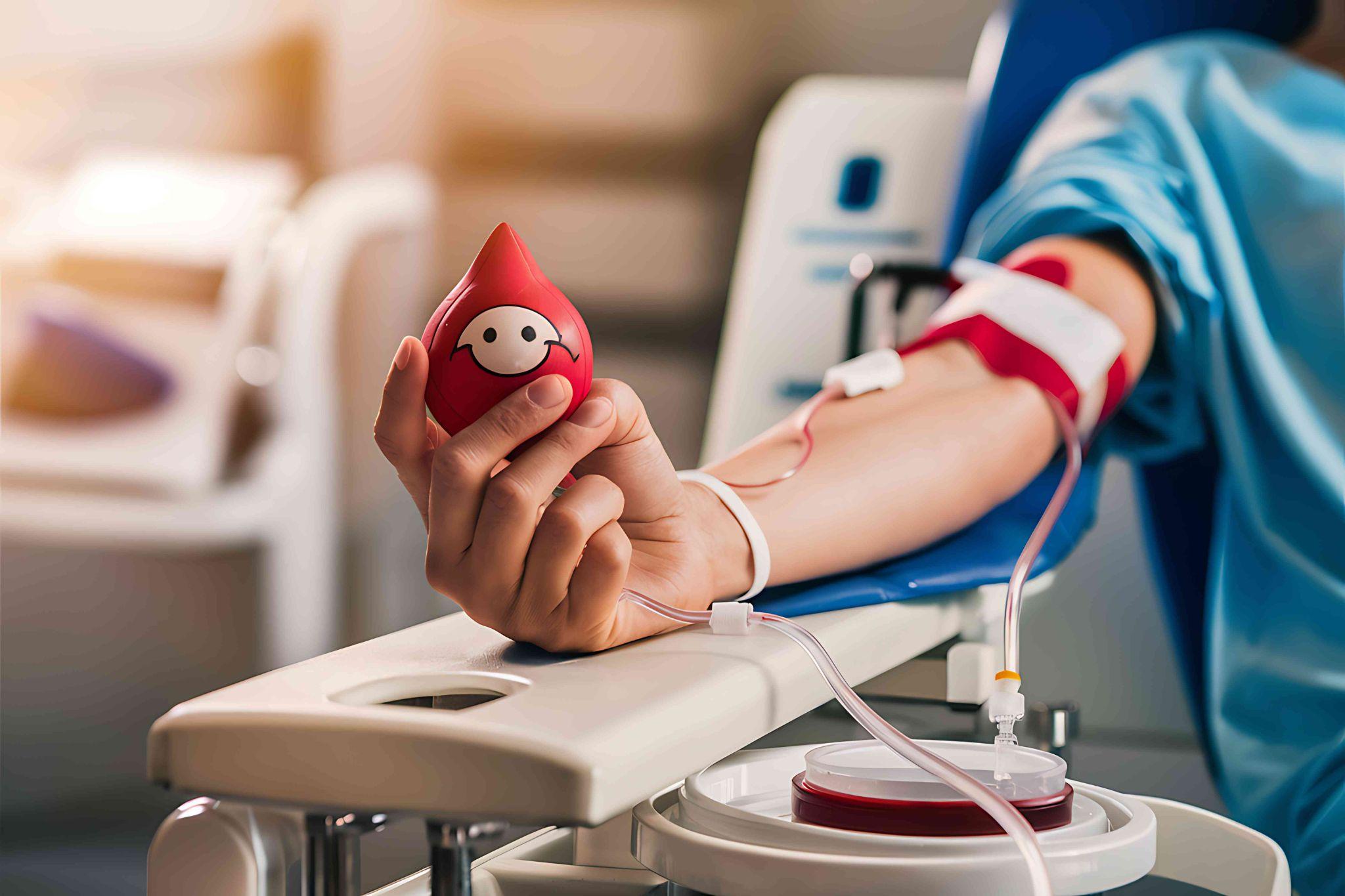
A donor seated comfortably on a padded chair with a small catheter inserted in the forearm, donating blood under medical supervision in a clean and organised setting.
Blood donation is a remarkable act of generosity that helps save millions of lives each year. Beyond its emotional value, there is clear science behind how donated blood is used and how your body responds to giving it. Understanding this process shows how a simple act of kindness can support hospitals, communities, and even the donor’s own well-being.
Once a person donates blood, it goes through several steps before it reaches a patient. The collected unit is labelled, tested, separated into components and stored according to strict safety standards.
Each donation is screened for infectious diseases such as HIV, Hepatitis B, Hepatitis C and syphilis. Only after all tests are clear is the blood considered safe for transfusion.
A single donation can be separated into red blood cells, plasma and platelets. These components serve different medical needs. Red blood cells help treat anaemia and blood loss. Platelets support patients undergoing chemotherapy or major surgery. Plasma helps burn victims and people with clotting disorders.
Each component has its own storage life. Red blood cells usually last about 35 to 42 days. Platelets last around 5 days. Plasma can be frozen and stored for up to a year. Because of these limits, regular donations are necessary to keep stocks from running out.
The human body is designed to adapt after blood donation. Within 24 to 48 hours, the plasma volume begins to restore itself. Over the next few weeks, the body produces new red blood cells to replace those that were donated. Iron stores gradually replenish with proper food and rest.
This natural recovery process keeps the blood-forming system active. In a healthy person, blood donation within recommended intervals does not harm long-term health.
Blood is a critical resource during accidents, severe injuries, internal bleeding and complex surgeries. In such cases, doctors may need multiple units of blood in a very short time. Without available blood, even skilled medical care can fall short.
Patients with conditions like thalassemia, sickle cell disease, haemophilia and certain cancers may need regular transfusions. Their treatment plans are often long-term, and a steady supply of safe blood is essential for their survival and quality of life.
Complications during childbirth, such as heavy bleeding, are a major cause of maternal deaths. Timely access to blood can save a mother’s life and prevent serious complications. Newborns and children with certain serious conditions may also need transfusions in specialised care units.
Natural disasters, large accidents and disease outbreaks can suddenly increase the demand for blood. A strong donation system acts like a safety net, allowing the health system to absorb such shocks without collapse.
Even though the main purpose of blood donation is to help patients, donors often experience indirect benefits.
Before donation, the donor’s haemoglobin, blood pressure, pulse and general health are checked. Sometimes this can reveal issues that need further medical attention, such as low haemoglobin or high blood pressure.
Some research suggests that regular blood donation may help control iron levels in the body. Excess iron can contribute to oxidative stress. By keeping iron within a healthy range, there may be a small positive effect on heart and blood vessel health in suitable donors.
Many donors report feeling a sense of purpose and satisfaction after donating. Knowing that one unit of blood may help more than one patient can create a strong feeling of meaningful contribution and reduce feelings of helplessness when hearing about emergencies.
Across the world, blood is needed every single day for both emergency and routine care. Many regions face a constant gap between demand and supply, especially for rare blood groups. A relatively small percentage of the population donating regularly is enough to cover most needs, but awareness and consistency are often lacking.
Young people, especially, can make a big difference. If they build the habit of donating at safe intervals, they can support the system for decades.

Close-up of a donor’s hand holding a red drop-shaped ball with a smiley face during the blood donation process, showing the tubing and collection setup in a medical environment.
Blood donation is both a scientific process and a deeply human act. It supports emergency care, long-term treatments and public health readiness. At the same time, it keeps donors more aware of their own health and gives them a chance to contribute directly to saving lives.
By understanding what happens to donated blood, how the body recovers and why hospitals depend on voluntary donors, it becomes clear that each donation is not just a routine act. It is a quiet but powerful step in keeping the entire healthcare system running and giving patients a real chance at recovery.
Stay informed, stay inspired — your go-to source for everything about blood donation and impact.

Learn how blood donation supports healthcare, what happens inside your body after donating, and why donating blood regularly benefits both patients and donors.

Learn how regular blood donation affects your body, the safety measures used at blood centres, and how to stay healthy as a repeat donor with help from Blood App.

Learn how blood groups and Rh factor work, why compatibility matters for safe transfusions, and how Blood App helps quickly locate the right donor in emergencies.

Many people avoid donating blood because of myths about weakness, infection and long-term health. Learn the real facts so you can donate safely and confidently.

Donating blood for the first time? Learn who can donate, how to prepare on the day, what happens during donation and how to recover safely, with support from Blood App.

Understand why regular blood donation is important, which patients depend on it every day, and how a strong donor community built through the Blood App can transform emergency care.